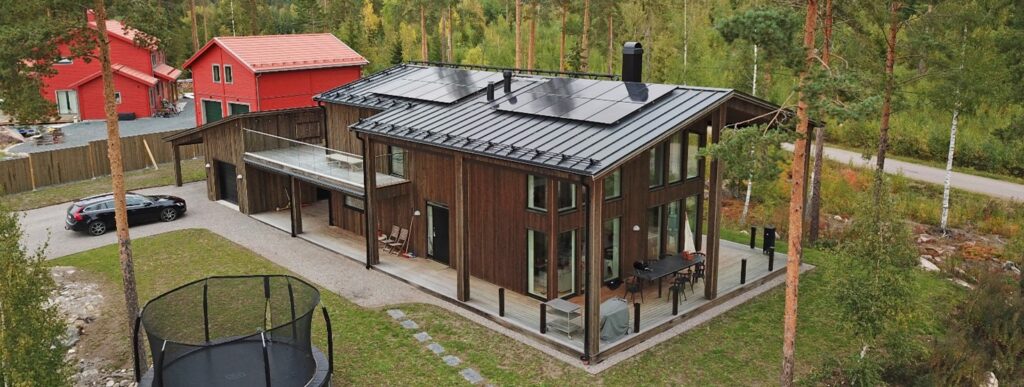How can we build houses as sustainable as possible and as far as possible prevent damage due, for example, fire and water leaks?
The Dalarna’s Villa research project, which was set up to improve competence in the construction industry when it comes to long-term sustainable buildings with healthy indoor environments for residents, will hopefully provide some of the answers. Various modern technologies for ventilation, heating, climate control, control and drainage are tested in the house.
Top photo: The Dalarnas Villa research project with material supply from Fiskarhedenvillan
Start from scratch
For Fiskarhedenvillan, which supplied the materials for the house, the project meant the start of new sustainable development for the company. How can a building’s carbon footprint be reduced during its lifecycle? The company is now investigating different solutions for foundations (the concrete foundations of a house account for the greatest environmental impact) as well as using better insulation and fewer thermal bridges to mean no heat pump is needed. Instead, for example, solar panels could supply the negligible amount of energy required for heating.
The average renovation of a water damaged bathroom involves 300 kilos of carbon emissions. For Fiskarhedenvillan, protecting the house from water damage means that a new product, the water fault switch, has now become standard in their houses. A water fault switch detects, alerts and shuts off the water supply in the event of a leak but also has other functions such as automatically shutting off the water when nobody is home or when there is a risk of freezing damage.
Nordic Ecolabel
The work of building the house was carried out by Magnus Byggare who also supervised construction students from the high school who were on site to learn about sustainable house building. Since the building should meet the requirements of the Nordic Ecolabel, much of the material used was new to the company.
For example, Dalarnas villa is insulated with cellulose insulation made from recycled newspapers in the outer walls and wood fibre in the inner walls. It produces around seven times lower carbon dioxide emissions compared to glass wool and 10-100 times lower than rock wool insulation.
Many useful lessons have already been learning from this exciting research project and more will follow in the coming years as the project continues to collect data on energy use and indoor climate.
Author: Benny Magnusson, Sustainable Building Cluster in Dalarna, Sweden













